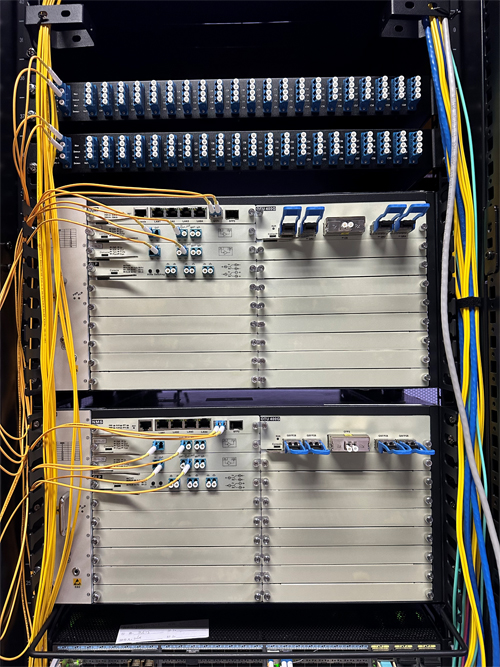
DWDM - dense wavelength division multiplexing. When doing IP communications, you will inevitably have to deal with low-layer transmission. Of course, you must be aware of it.
The following is an introduction to DWDM:

The schematic architecture of Dense Wavelength Division Multiplexing (DWDM) allows the transmission end to combine optical signals of n wavelengths and transmit them on the same optical fiber. The transmission capacity of the network can be greatly increased.
Benefits of DWDM
1 Evolution from power grid to optical network
DWDM technology lays the foundation for the evolution from power grid to optical network. Traditional electronic networking cannot directly perform multiplexing, switching, or routing at the optical layer. ) and other actions, the network node needs to use photoelectric conversion equipment to convert the optical signal into an electrical signal and then convert the electrical signal back into an optical signal. In this way, the overall transmission rate will be limited due to the use of photoelectric conversion equipment, and it is impossible to combine optical fiber with biomass. The potential of unlimited bandwidth can be fully utilized.
Optical networks using DWDM as a mechanism can directly operate signals at the optical layer to solve the above problems. Therefore, they overcome the traditional transmission bottleneck and bring about the concept of "Virtual fiber" to make the most efficient use of existing optical fibers.
2 Diversified Internet Services
DWDM has nothing to do with the transmission rate (Bite Rate) and protocols (Protocols), which means that it can provide a transmission network that is completely independent of the service form. For example, a DWDM network that is completely transparent to the transmission rate and protocols can be ATM, IP, SDH and other signal interfaces provide diversified network services.
3 Reduce costs and improve service quality
Because signal assignment or scheduling is performed at the optical layer, it is simpler and more efficient than traditional bandwidth scheduling at the electrical layer, which can reduce expenses. In addition, when the optical fiber on the network is cut (cable cut) or the optical signal fails, signal protection switching or network routing recovery (restoration) can be performed at the optical layer. Compared with the traditional restoration action at the electrical layer, the switching time is Shorter, it increases the availability of the network and improves service quality.
4 Improve transmission distance and increase network capacity
The biggest problem in high-speed STM-64 TDM (Time Division Multiplexing) transmission is the serious dispersion phenomenon of optical fibers, which will have a degradation effect on the transmitted optical signal. Therefore, if electronic regenerators or other compensation techniques are not used, Theoretically, STM-64 signals can be transmitted within G.652 optical fiber for about 60 kilometers. If the DWDM technology of 8 wavelengths is used to transmit signals of 2.5Gb/s for each wavelength, the transmission capacity can be 20Gb/s, and the transmission distance can reach more than 600 kilometers without the need for electronic regenerators, but optical regenerators. amplifier.
STM-64 multiplexing usually has certain restrictions on the frequency and format of tributary signals (Tributary), while DWDM multiplexing has almost no restrictions at all. Any signal format such as PDH, ATM, SDH, and IP can be input , increase the flexibility of network transmission. If the Optical Add-Drop Multiplexer (OADM) and the Optical Cross-Connect (OXC) come out in the future, the optical wavelength can be directly used as the handover unit, eliminating the need for O/E/O conversion steps. , which can improve the efficiency of network scheduling. DWDM provides different technical options to solve the increasing user bandwidth requirements and increase network capacity.
DWDM has been deployed on a large scale in telecommunications long-distance communications.
DWDM can transmit multiple optical signals in one optical fiber. Its advantages are large capacity (above 10G) and long transmission distance.
Of course, the price of DWDM systems is also very high. If it is large capacity (above 10G) and long distance (between cities), using DWDM is more cost-effective than SDH.
Does direct laid fiber refer to bare fiber? Or does it mean SDH? If it is bare fiber, I am afraid it can only be used in cities. SDH is generally used for long-distance communications a
t rates below 2.5G.
